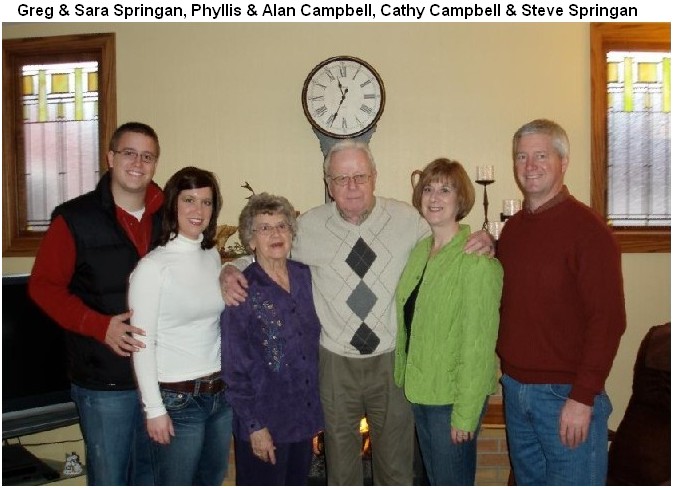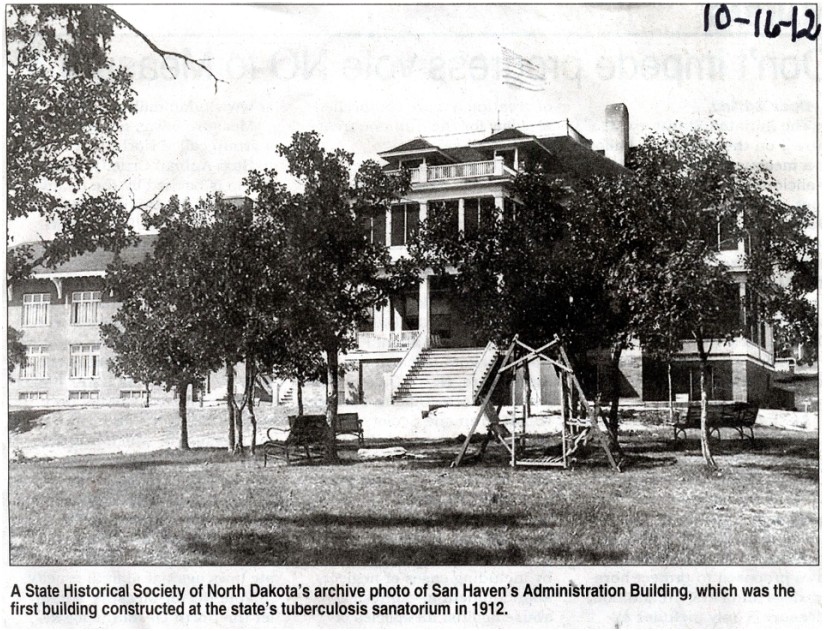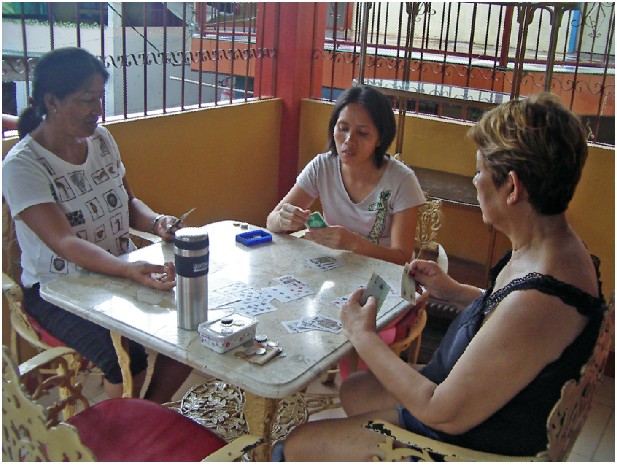Today, I visited my (2) cousins, “Eleanor”, at Rugby’s Haaland Home.
I really am fond of both.
So it is a treat for me to go see each of them!
I found Eleanor N. viewing the birds.
She gave me a lesson on the various kinds within the cage.
Whilst walking through the hall, to her room,
Eleanor (Metcalfe) Nerpel and I began discussing silent movies.
Soon we met Marjorie Kester who shared a fond memory from her�
childhood.
Mrs. Kester told of attending a silent movie she went to as a child.
She said, at the time, it was special time to go to the movies�
with a group of friends
Each individual paid the general admittance fee of 1 dime.
The excited friends went into sit down and watched, the silent movie.
Marjorie says she didn’t remember much about the show except the title,
_________She thinks it was called_____”Rubber Tires”
It was when the last intermission came,
it was discovered the last reel was not there.
NO ending.
It had not been sent.
The theatre owners apologized and refunded each of those in�
attendance 10 cents.
No one was upset, nobody minded, and they never cared how it ended.
Mrs. Kester said, “Everyone had a good time watching the first part�
of the movie.”
A wonderful gathering of friends, who were especially excited, on the�
long walk home
because, each still had 10 cents in the pocket.”
Does anyone recall the name of the last silent movie shown at the�
Dunseith Theatre?
Or, the name of the first “talkie” shown?
My cousin Eleanor believes the last silent movie was starring �
*Charlie Chaplin*.
Until later,
Thanks.
Vickie
In the summer months of 1981 in Jamestown, N.D., a construction company was constructing an apartment complex when it accidentally unearthed nine linear and nine conical mounds while preparing the footings for the complex. Within three of the mounds, 75 Native American were found buried, which included a female Indian between the ages of 35 to 45, and who was found to have had tuberculosis of the hip bone. The radiocarbon dates of the hip bone dated to around 980 A.D., granting North Dakota with one of the oldest paleontological specimens of TB found on the North American Continent.
Although finding TB in the State of North Dakota during the time John the Apostle was writing the Book of Revelation, little is known about TB until the beginning of the 1900s when this disease made an appearance in the state, and marked it for death.
As TB made its way across the state killing numerous individuals and bringing fear to all its’ communities, the Turtle Mountains gained a sense of immortality as the only place in North Dakota where one could go to be saved from TB; and, it came due to special circumstance that could only be found in the Turtle Mountains.
In the “Biennial Report of the State Board of Health to the Governor of North Dakota for the Years of 1901 and 1902,” Dr. H.H. Healy made a quick reference in his report about TB, After careful inquiry I believe that the state is remarkably free from this disease.”
Two years later, when it came time for Healy to write the state health report, he was so ill with TB he could not write or present the report to Gov. Frank White.
Healy would recover from his TB, but the majority of the state would not be as lucky as Healy, as death rates increased across the state due to TB. By 1908, the statistics on TB were alarming.
“One death in every ten, excluding stillbirths and those who died from violence, is due to it (tuberculosis),” the state health report stated. “At this rate, assuming our population to be 500,000 residents, there will die of tuberculosis in our state 50,000 of those now living.
With an alarming rate of TB deaths in North Dakota, Dr. James Grassick and Dr. Fannie Dunn Quain founded the Anti-Tuberculosis Association of North Dakota in 1909 immediately began lobbying the state to construct a sanatorium.
Through Grassick and Quian’s hard work, the two physicians saw some positive results from lobbying with the state’s leadership as they went into the 1909 legislative session, obtaining $10,000 to purchase land for a state run sanatorium, along with a board to oversee the project.
The board consisted of Gov. John Burke, the newly elected democratic governor to North Dakota; Grassick as the newly appointed superintendent of the State Board of Health; Dr. G.F. Ruediger of the public health laboratory; Quain and C.J. Lord of Cando.
For the most part in 1909, the word sanatorium wasn’t a familiar term in North Dakota. The word comes from the Latin word, sanare, which when translated into English, means “to heal.” Sanatoriums had its beginnings in the United States starting in 1884 when Dr. Edward Trudeau of New York was diagnosed with the disease. Learning of his fate, he made the decision to spend the remainder of his days resting in the Adirondack Mountains.
While living in the Adirondacks, Trudeau discovered that instead of health failing, his health improved. He theorized that rest, fresh air and a good balance diet in an isolated area with proper altitude and low moisture rates could save a person’s life.
In 1884, Trudeau put his theory into practice and opened the Adirondack Cottage Sanatorium. Trudeau’s theory and sanatorium was successful and by the turn of the century sanatoriums were opening up nationwide.
In North Dakota, after gaining funding to purchase land for a sanatorium, the five board members started looking for best the location to construct the state’s sanatorium and soon found themselves on the south-east side of the Turtle Mountains just northeast of Dunseith.
Like Trudeau’s Adirondack Mountains, the state board felt the Turtle Mountains was the best place to locate to construct a sanatorium, because it held the right climatic conditions for TB patients, which included of high altitude, low moisture rates and all in an isolated area.
The site was also protected on the north and west sides by hills and trees, the site offered fresh water with lakes and springs and the ground’s soil was very fertile for growing crops. The land was perfect to construct an isolated community where people could come and recover from TB.
By choosing this land in the Turtle Mountains, the state also acquired an additional 100 acres of land as a gift to the state. The board made the decision to purchase the site and secured it for $4,052.
Although pleased with the funding they received to purchase the land and prepare it for a sanatorium, Grassick and Quain were disappointed that no allocations were made to construct the building, leaving them with land, but no building to start caring for victims of TB in the state.
Burke, who was a strong supporter of sanatoriums, and great orator, spoke on the issue during the opening of the Twelfth Legislative Session of North Dakota in his State to State address to the joint session of the North Dakota Congress in 1911.
“We have expanded altogether $4,052 for land and $4,119 for the lay out of the land. We have $1,8000 of the appropriations still unexpended,” Burke said. “We have expanded about $100,000 in the last two years fighting disease in animals. Surely we can afford to spend a little fighting this dreaded disease among our own kind. Everywhere war is being waged against the Great White Plague. It is no longer an experiment. We know that consumptives are being cured everyday in sanatoriums throughout the land. Let us not be behind the times in this respect.”
Twenty days later, Rep. Wesley Fassett of Dunseith, introduced House Bill 155 as “a bill for an act to provide for the establishment and government of a State Tuberculosis Sanatorium,” Fassett said in the House chamber with great determination, which was passed unanimously in both the house and senate with $25,000 allocated to construct an administration building; $3,000 for cottages to be built where patients would be located and treated, $1,000 for equipment; $1,000 for stock and poultry and %500 to construct a barn.
The bill also included that a board be appointed to oversee the project. Burke appointed William Gottbrecht of Dunseith to be the president of the board; Dr. D. Lemieux of Dunseith the secretary, Dr. J.P. Widmeyer of Rolla the superintendent along Marion Edwards of Rolette and Grassick.
The board hired H.G Lykken of Grand Forks as the consulting engineer; W.J. Edwards of Grand Forks as the architect of the administration building and the Northern Construction Company of Grand Forks to construct the water, sewer and administration building.
After four long years, Grassick and Quain’s patience and determination to bring a state sanatorium to North Dakota finally paid off in the later part of November 1912 when the North Dakota Tuberculosis Sanatorium received its first patient; and, a future that would change North Dakota in infinite detail.
The little girl, who had just started to read her book, replied to the total stranger, “What would you want to talk about?”
“Oh, I don’t know,” said the atheist. “How about why there is no God, or no Heaven or Hell, or no life after death?” as he smiled smugly.
“Okay,” she said. “Those could be interesting topics but let me ask you a question first. A horse, a cow, and a deer all eat the same stuff – grass. Yet a deer excretes little pellets, while a cow turns out a flat patty, but a horse produces clumps. Why do you suppose that is?”
The atheist, visibly surprised by the little girl’s intelligence, thinks about it and says, “Hmmm, I have no idea.” To which the little girl replies, “Do you really feel qualified to discuss God, Heaven and Hell, or life after death, when you don’t know s—?”
And then she went back to reading her book.




